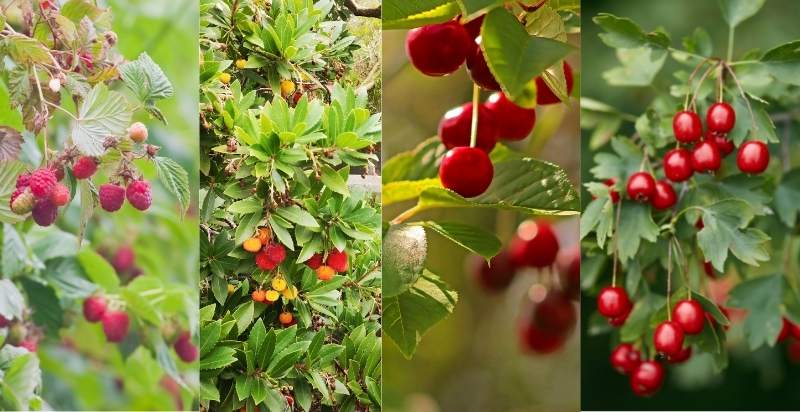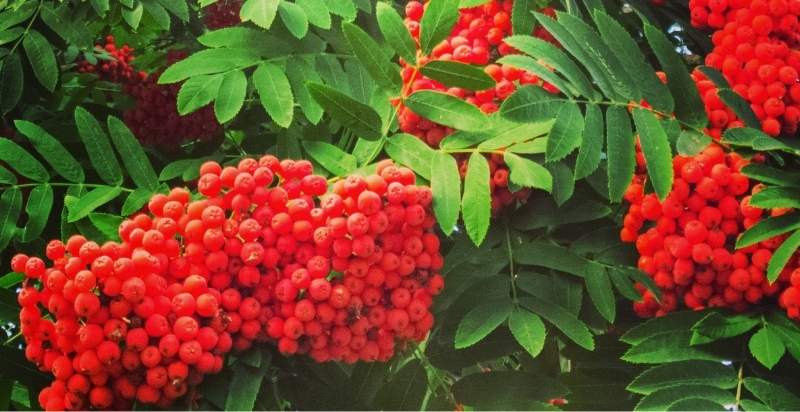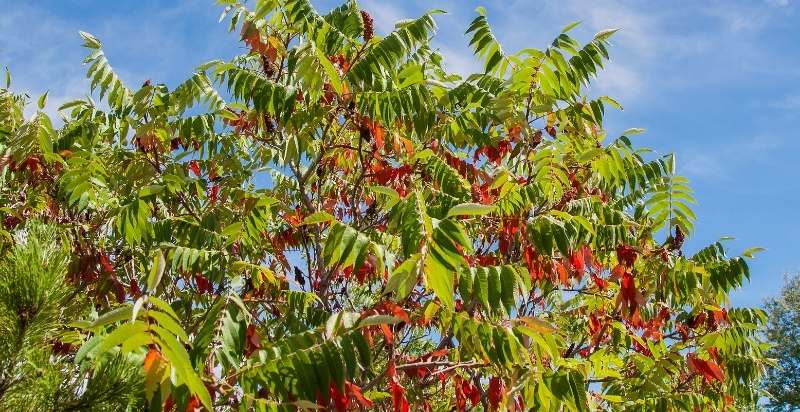A tree with red berries can be a beautiful and welcome sight in any garden or natural setting. However, many people are unsure how to identify a tree with red berries and may mistake it for something else entirely. In this article, we will help you learn how to identify a tree with red berries to enjoy its beauty without worry. So lets start with the basics:
What Are Red Berries?
Red berries are a type of fruit that is typically small and brightly colored. The color of the berry can vary depending on the species of tree, but they are typically either red or purple. These are often used in pies, jams, and other desserts. Some common trees that have red berries include:
-Raspberry bushes
-Cherry trees
– Crabapple trees
-Hawthorn bushes

How To Identify Red Berries ?
The first step in learning how to identify a tree with red berries is to take a close look at the tree itself. Note the shape of the leaves, the color of the bark, and the overall size and shape of the tree. If you can, try to find a picture of the same or similar tree in a book or online. This will help you to get a better idea of what you are looking for.
Once you have a general idea of what the tree looks like, take a closer look at the berries. Note their color, size, and shape. Also, pay attention to how they are distributed on the tree. Are they clustered together or spread out? Are they all on one branch or scattered throughout the tree?
If you can, try to find a picture of the same or similar berry in a book or online. This will help you to get a better idea of what you are looking for.
Now that you know how to identify a tree with red berries, you can enjoy its beauty without worry!
What Are Some Benefits Of Identifying A Tree With Red Berries?
Some of the benefits of identifying a tree with red berries in your area include the following:
1. Knowing which trees are safe to eat the berries from
2. Knowing which trees to avoid if you are allergic to the berries
3. Being able to identify the tree if you see it in another location
4. Knowing which trees attract certain animals (e.g., birds) that you may want to observe
5. Knowing the general characteristics of the tree, which can help identify other trees
Which Are Few of The Most Common Trees With Red Berries:
Now that you have a general idea of what the tree and its berries look like, you can start to narrow down your options. Here are a few of the most common trees with red berries:
-Holly (Ilex spp.): Holly is a broadleaf evergreen tree native to Europe, Asia, and North America. It can grow to be 15-20 feet tall and has dark green, spiny leaves. The berries are usually red but can also be orange or yellow. They are clustered in groups of two or three and are poisonous to humans if ingested.
-Hawthorn (Crataegus spp.): Hawthorn is a deciduous tree native to Europe, Asia, and North America. It can grow to be 20-30 feet tall and has lobed leaves that turn red in the fall. The berries are red and clustered in groups of 3-5. They are not poisonous to humans if ingested.
-Rowan (Sorbus spp.): Rowan is a deciduous tree native to Europe and Asia. It can grow to be 20-30 feet tall and has lobed leaves that turn yellow in the fall. The berries are red and clustered in groups of 3-5. They are not poisonous to humans if ingested.

What Are They Used For?
One of the most common uses for red berries is as a food source. Red berries are often eaten raw, cooked, or made into jams, jellies, and pies. They can also be used to make wine and other alcoholic beverages. Some red berries are poisonous, so it’s important to know which ones are safe to eat before consuming them.
In addition to being eaten, red berries are also used in many traditional medicines. For example, the leaves and berries of the sumac tree are sometimes used to treat diarrhea, dysentery, and stomach problems. The bark of the dogwood tree is sometimes used to treat fever and inflammation. And holly berry extract is sometimes used as an “insecticide” to kill insects and worms.
Finally, red berries are also used in many decorative applications. For example, holly is often used as a Christmas decoration, and sumac berries are sometimes used in floral arrangements.
How to Harvest Them:
If you’re interested in harvesting red berries, there are a few things you need to know. First, it’s important to identify the tree and ensure that the berries are safe to eat. Second, you’ll need to determine when the berries are ripe. And third, you’ll need to have the proper supplies on hand to harvest them.
To identify the tree, look for size, leaf shape, and flower color characteristics. Once you’ve determined which tree it is, consult a field guide or ask a local expert to confirm that the berries are safe to eat.
To determine when the berries are ripe, pay attention to their color. Red berries will usually turn from green to red when they’re ripe. Some berries, such as holly berries, may change color from red to black when ripe.
To harvest the berries, you’ll need a bucket or other container to put them in. You may also want to wear gloves to protect your hands from the thorns on the tree. To pick the berries, twist them off of the branch. Be careful not to damage the tree or branches as you harvest.
After you’ve harvested the berries, you can either eat them right away or store them for later use. To store them, place the berries in a covered container and keep them in the refrigerator for up to a week. You can also freeze them for longer-term storage.
Tips
– Make sure you know which tree the berries come from and that they’re safe to eat before consuming them.
– Pay attention to the color of the berries to determine when they’re ripe.
– Harvest the berries carefully so as not to damage the tree or branches.
– Store the berries in a covered container in the refrigerator or freezer.
Where Can You Find These Trees?
Red berry trees can be found in many places around the world. In North America, some common species include holly (Ilex spp.), sumac (Rhus spp.), and dogwood (Cornus spp.).
In Europe, some common species include rowan (Sorbus aucuparia) and elderberry (Sambucus nigra). And in Asia, some common species include mountain ash (Sorbus commixta) and red date (Ziziphus jujuba). You can also find these trees in many other parts of the world.

What Are The Drawbacks Of Eating Red Berries From Trees?
While there are many benefits to eating red berries from trees, there are also some drawbacks. One of the biggest dangers of eating red berries is that they may contain toxic compounds. For example, some types of holly (Ilex spp.) contain compounds that can cause vomiting, diarrhea, and abdominal pain if consumed in large quantities. It is essential to exercise caution when eating any berry and to make sure you know what kind of tree it came from. If you are unsure, it is always best to err on the side of caution and not eat it.
Conclusion
As you can see, there are several trees that have red berries. By looking at the color, shape, texture, and size of the berries, you can identify which type of tree it is. Just be sure to use caution when handling any berries you’re unfamiliar with, as some can be poisonous.
- Everything You Wanted to Know About Red Tamarillos - June 2, 2025
- A Guide to Tulips: Everything You Need to Know & More… - June 2, 2025
- Guanabana: Description, Flavor, Benefits, And Uses - May 27, 2025
